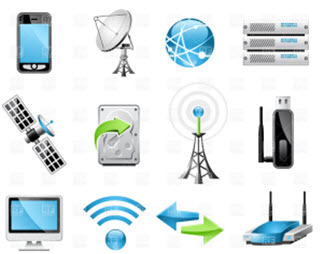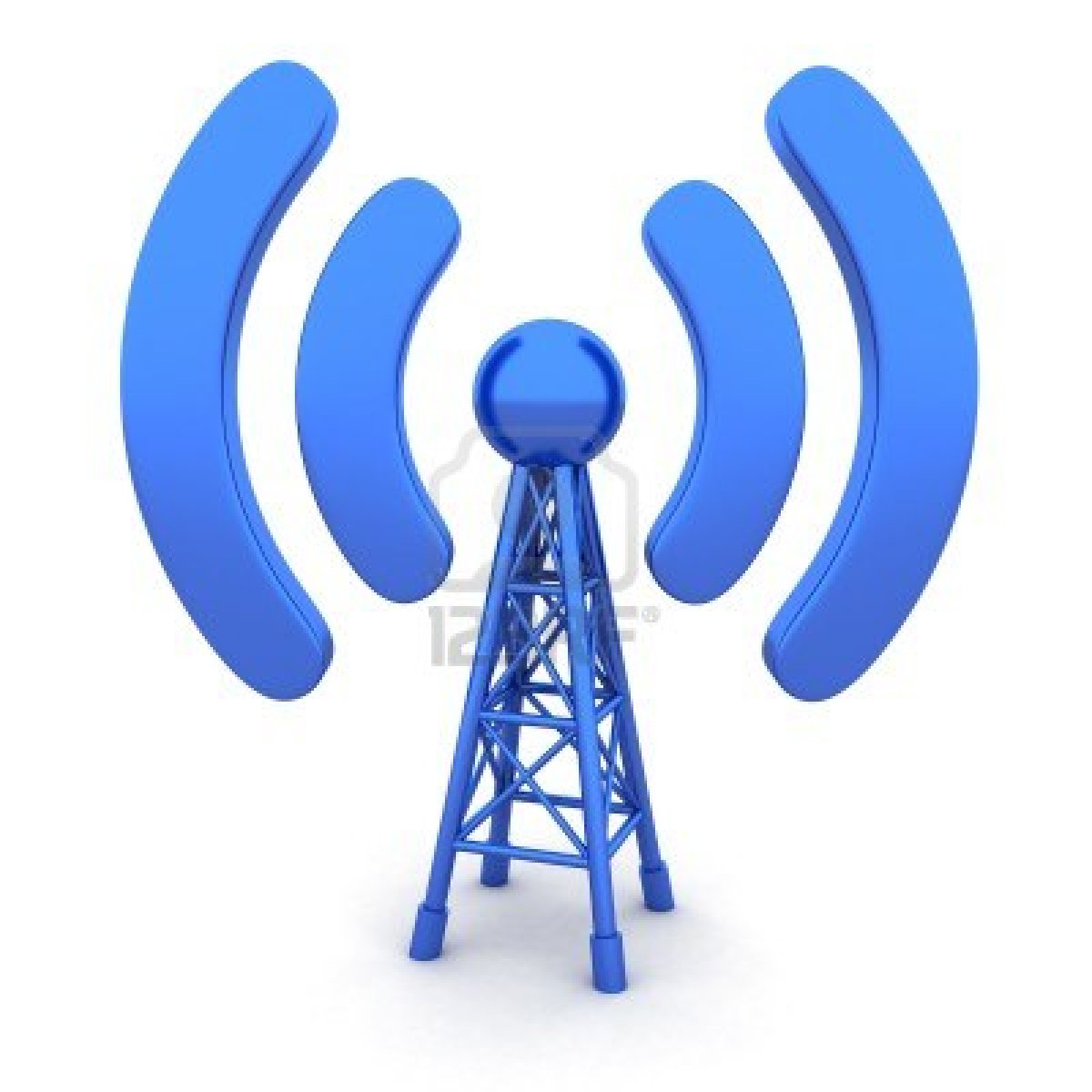What is wireless communication?
If communication is done between two mediums without using a cable or wire, then it is referred to as wireless communication. Wireless communication is a type of data communication in which the transmission of information takes place without the help of a wire or cable. The device works by broadcasting electromagnetic signals through the air, atmosphere, or physical environment. The sender device generates electromagnetic signals (wireless signals) which is received by several intermediary stations before it reaches the destination device. The destination station receives and processes these signals. An electrical circuit with antenna, which is capable of changing digital data to wireless signal, can act as a transmitter (sender) and a circuit converts wireless signal to digital data with antenna can be a receiver.
Types of wireless communication
There are various types of wireless communication technologies such as:
- Bluetooth communication
- Satellite communication
- Wireless network communication
- Mobile communication
- Infrared communication
The above technologies have different architectures. All of these lack a physical or wired connection between their respective devices to initiate and execute communication. The Bluetooth device is used for close-range data transmission from one digital device to another. It follows a one-to-one wireless transmission connection that uses 2.4GHz-band radio waves.

https://www.elprocus.com/In the recent years wireless technology has become one of the most important form of media transmission form one electronic device to other. The example of wireless communication is radio broadcast (RF), Infrared (IR), Bluetooth, GPS, WIFI, microwave etc.
Every day wireless communication technology has an invisible effect on life. If you own a company, you might be wondering how to get the most out of the numerous types of wireless communication.
1. Satellite Communication
A satellite is a smaller object in space that orbits a larger object. For example, The moon is a natural satellite of the earth. Satellite communication is defined as communication between two ground stations using a satellite. Electromagnetic waves are employed as carrier signals in this communication. These signals transmit data such as voice, audio, video, or any other type of data from the ground to space and vice versa.
It is a method of transmitting information from one place to another place in orbit around the earth. Various electronic transmission devices such as radio, internet, television, telephone, and military applications use satellite communication. A satellite is a self-contained communication system. It receives signals from the earth and uses a transponder to retransmit the signals back to the earth. A transponder is an integrated receiver and transmitter of radio signals.
In 1957, the Soviet Union launched Sputnik 1, the world's first artificial satellite. In 1958, US launched the artificial satellite Explorer 1.
2. Microwave Communication
Microwaves are very short-wavelength radio transmissions. Antennas can focus microwave signals in the same way that a searchlight concentrates light into a narrow beam. Signals are sent straight from the source to the receiver. The range of a reliable microwave signal does not extend much beyond the visible horizon.
3. Infrared Communication
The electromagnet's infrared band has a wavelength of 980nm and a frequency range of 430THz to 300GHz. The propagation of light waves in this band can be employed for data transmission and reception in a communication system. This communication might take place between two mobile devices or between a mobile device and a stationary device.
4. Broadcast Radio
Radio broadcasting is the transmission of audio (sound) over radio waves with the goal of reaching a large audience. Radio waves are transmitted by a land-based radio station in terrestrial radio broadcasting, whereas radio waves are broadcast by a satellite in Earth orbit in satellite radio broadcasting.
5. Bluetooth Technology
Bluetooth is a wireless communication technology which is used for small distance data transmission. Bluetooth technology is used in one-to-one communication of devices which uses 2.4GHZ band radio waves. This technology was invented in 1994 and is used to replace cables and wires for transmission of data. It creates wireless network for within 1 meters of radius. Bluetooth is less costly as compared to Wi-Fi and also consumes less power. The process of connection of two Bluetooth devices is known as "pairing".
Advantages of wireless transmission
1. Easy to setup
It's simple to expand and set up a wireless network.
2. There is no need for wires or cables
Any physical connection can be used to customise it.
3. Efficiency
Data connectivity is upgraded and improved with wireless transmissions. The movement of information between users is substantially faster in the case of wireless transmissions.
4. Cost effectiveness
Wireless networks are less expensive since they are simple to set up and does not require cables.
5. Better or global coverage
It gives worldwide reach by allowing networking in situations where wiring is not possible, such as rural areas, battlefields, and so forth.
Disadvantages of wireless transmission
- Interference is more likely.
- Since it involves open communication, it is insecure.
- Unreliable.
- The transmission speed is significantly slower.
- Increased likelihood of jamming.
Frequency range
Frequency is the number of waves that pass a fixed point in a unit of time. Another definition of frequency is that it is the rate at which the current changes its directions. Our television, mobile phone, and all other electronic devices work at a particular frequency. These devices receive signals via antenna in the form of electromagnetic waves. But they don't interfere with each other's signals because all wireless devices operate on their own frequency bands and transmit signals to each other.
Example: The cell phone operates either between 824 and 894 MHz or 1850 to 1990 MHz frequency. FM radio operates between 87.5 and 108 MHz frequency. The television broadcasting operates between 54 and 216 MHz frequency.
Wireless transmission components
Wireless transmission components comprise of antennas, signal strength, transmitter, receiver and channel.
1. Antennas
The first antenna was made by the German physicist Heinrich Hertz in 1888 to prove the existence of waves which is predicted by the electromagnetic theory of James Clerk Maxwell. In his experiments, Hertz used dipole antennas and placed them at the focal point of parabolic reflectors for both transmitting and receiving signals. After the Hertz, Guglielmo Marconi had worked on the antennas in 1895; he developed antenna for long-distance, wireless telegraphy. Guglielmo Marconi had received the Nobel Prize for his experiments.
An antenna is also known as aerial in radio engineering, and it is an interface between radio waves. An antenna is a group of various conductors. It is used to convert the space and electric currents which move over the metal conductor to generate electromagnetic or radio waves. The television, cell phone and satellites use these waves. In most cases, metallic devices use the antenna to radiate or receive electromagnetic or radio waves. The antenna has two categories: transmitting antenna and receiving antenna. The transmitting antenna is used at the transmitter end, and it transmits signals to the receiver end, and the receiving antenna is used at the receiver end for receiving the signal.

Image Credits: http://4.bp.blogspot.com/How does an antenna work?
The radio transmitter passes the electric current to the antenna’s terminals, and the antenna transmits the radio waves at the transmitter end. In contrast, the antenna converts the radio waves into an electric current at its terminals at the receiving end, where the electric signals are amplified.
2. Signal strength
The radio signal strength is the transmitted power output received by the antenna receivers after transmitting from a wireless device. The broadcast transmission signal strength is measured in dB-millivolts per meter, and for low power devices, it is measured in dB-microvolts per meter.
3. Transmitter and Receiver
Transmitter is a device which is used to transmit the data over a channel. The signal consists of information in any form such as, in the form of video, voice or data. In order to transmit the signal, the transmitter uses some form of modulation.
Receiver is a device which is used to receive the information on the other side and decodes the information. It uses antennas to receive the signals.
4. Channel
Channel is basically a path between a two nodes. It can be in the form of physical cable or wire. The signal is transmitted through the wire or a subchannel within the carrier frequency.
Protocols used for wireless transmission
There are two types of communication protocols:-
- Wired communication protocol is a data transmission protocol where the data is transmitted over a wired infrastructure or a cable such as, telephone network and fiber optic data communication is a form of wired communication.
- Wireless Communication is the data transmission protocol over a wireless network. It does not use any form of electrical conductor. The most common and simple type of wireless technology is radio waves.
There are a total 9 wireless protocols. These are:-
- Wi-Fi
- Wi-Fi direct
- Zigbee
- Z wave
- Bluetooth
- RF
- 6LowPAN
- GPRS/3G/LTE
- NFC
Common Mistakes
A wireless technology transfers the information from one electronic device to another without using any cable or wire. These technologies don't use electrical conductors or any medium by which to perform the transformation operation. The transmitter takes information, such as audio, video, or any text form, and transmits it in an electromagnetic wave. Overall, the transmitter encodes digital information. The receiver detects the code and decodes the digital code into the original code. In both cases, antennas are used.
Context and Applications
This topic is significant in the professional exams for both graduate and postgraduate courses, especially for:
- Bachelor of Technology in Computer Science
- Bachelor of Technology in Information Technology
- Master of Technology in Computer Science
Related Topics
- Low-Power Wide-Area (LPWA) Networks
- Enhanced Wireless Location Tracking
- Software-Defined Radio (SDR)
Practice Problems
Q1- Which mode is characteristically used for installing networks in wireless communication devices?
- Fixed and wired
- Fixed and wireless
- Mobile and wireless
- Mobile and wired
Correct Answer: 1. Fixed and wired
Explanation: Fixed and wired mode is characteristically used for installing networks in wireless communication devices.
Q2- The transmission in wireless technology takes place by means of using ____________
- electromagnetic signal
- electronic signal
- electrical signal
- All of these
Correct Answer: 1. electromagnetic signal
Explanation: The binary digits are represented by electromagnetic signals carried via wireless medium.
Q3- Wireless communication started in:
- 1897
- 1885
- 1869
- 1879
Correct Answer: 1. 1897
Explanation: Marconi tested an 18-mile radio transmission to a tugboat across the English Channel in 1897. The Wireless Telegraph and Signal Corporation, the first wireless company, was created, and they purchased the majority of Marconi's patents.
Q4- Most of the wireless systems today operate at a frequency of about:
- 90 MHz
- 800 MHz
- 100 MHz
- None
Correct Answer: 2. 800 MHz
Explanation: The 800 MHz frequency band covers the range of 790–862 MHz in the electromagnetic spectrum.
Q5- What are the types of wireless transmission?
- Bluetooth communication
- Satellite communcation
- Infrared communication
- All
Correct Answer: 4. All
Explanation: Bluetooth communication, Satellite communication, Infrared communication, Broadcast radio are the various types of wireless communication.
Want more help with your computer science homework?
*Response times may vary by subject and question complexity. Median response time is 34 minutes for paid subscribers and may be longer for promotional offers.
Search. Solve. Succeed!
Study smarter access to millions of step-by step textbook solutions, our Q&A library, and AI powered Math Solver. Plus, you get 30 questions to ask an expert each month.
Computer Networks
Overview of Networking concepts
Wireless Transmission Technology
Wireless Transmission Technology Homework Questions from Fellow Students
Browse our recently answered Wireless Transmission Technology homework questions.
Search. Solve. Succeed!
Study smarter access to millions of step-by step textbook solutions, our Q&A library, and AI powered Math Solver. Plus, you get 30 questions to ask an expert each month.